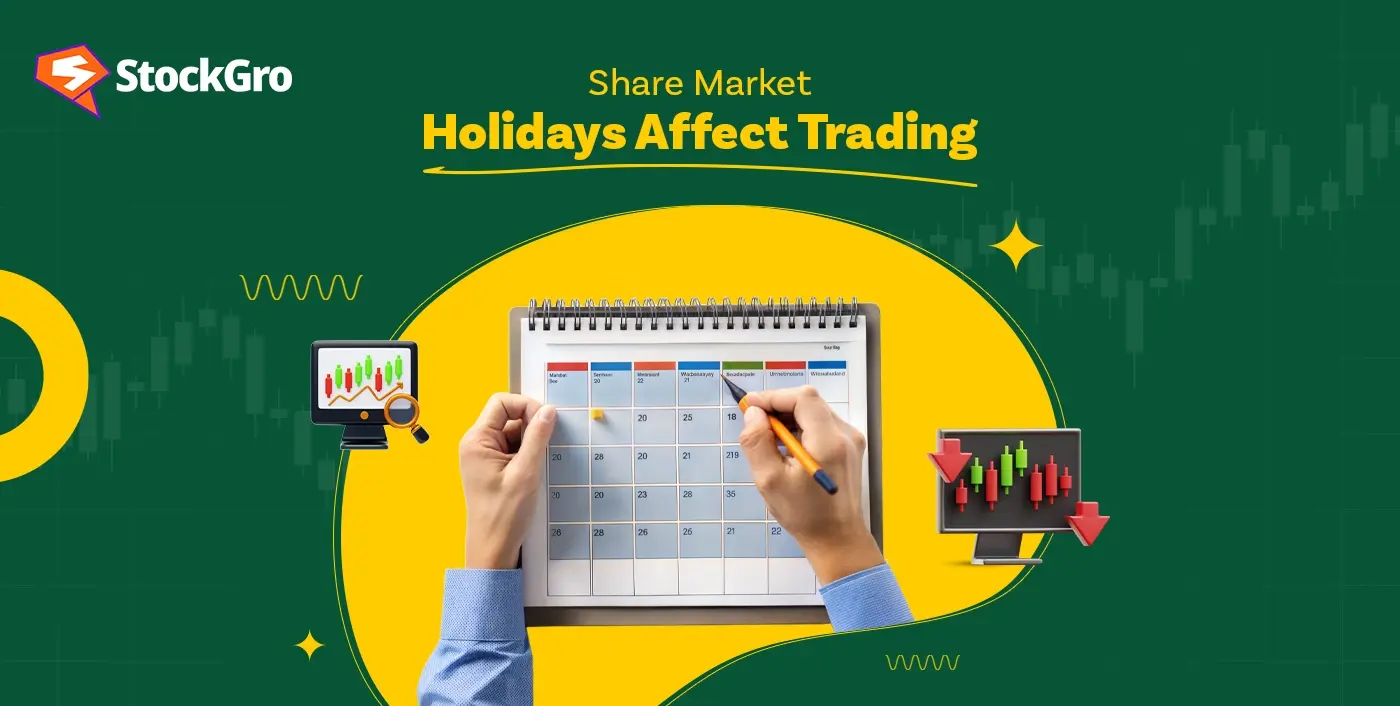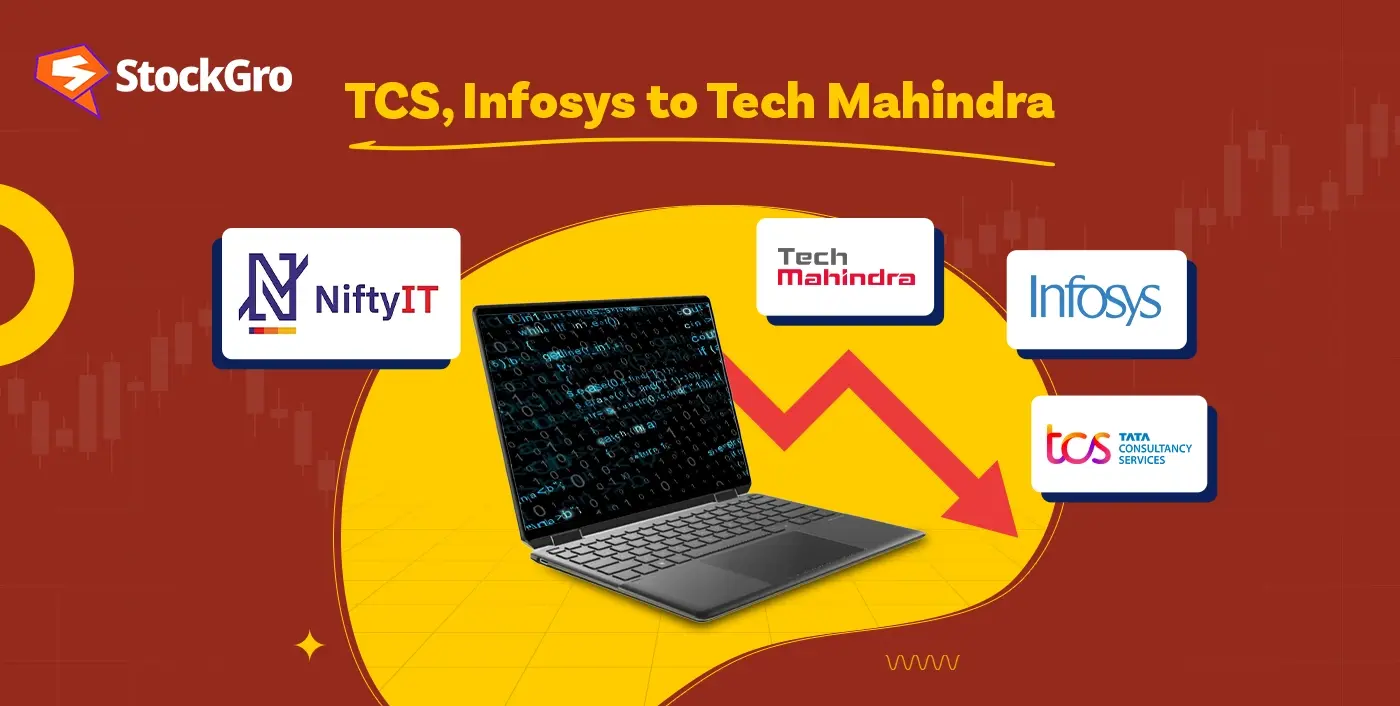
Market holidays might seem like just another day off, but their impact on trading volume, price movements, and investor sentiment is undeniable. Understanding these effects can give traders and investors a strategic edge.
Understanding the holiday effect on stock markets
Stock markets have well-documented seasonal patterns, and holidays play a significant role in shaping investor behaviour. Whether it’s the pre-holiday rally, post-holiday dip, or low-volume trading days, market holidays create opportunities—and risks—for traders and investors.
Historically, studies have shown that markets tend to exhibit certain trends around holidays. The pre-holiday effect, first documented by Ariel (1990), suggests that stock prices tend to rise before holidays. On the flip side, the post-holiday effect, observed in studies like Cadsby and Ratner (1992), indicates that markets often decline right after a holiday.
Also read: NSE Holidays List 2025 | Trading sessions and dates
How stock market holidays influence trading volume
Before the holiday
- Trading volume surges as investors and fund managers adjust portfolios before market closure.
- Institutional investors rebalance portfolios, increasing liquidity temporarily.
- Lower volatility due to reduced participation from risk-averse traders.
During the holiday
- No trading occurs, but global events or economic news can impact market sentiment.
- Investors with exposure to international markets monitor ADRs (American Depository Receipts) and GDRs (Global Depository Receipts) for price movements.
After the holiday
- Trading volume spikes as investors react to accumulated news and global events.
- Stock prices may see gaps (both up and down) due to pent-up market activity.
- Institutional investors adjust positions based on new economic data.
| Stock Market Phase | Impact on Trading Volume |
| Pre-Holiday | The surge in trading volume as investors adjust portfolios. |
| During Holiday | No trading; risk accumulates from external events. |
| Post-Holiday | High volatility and price adjustments due to news and global sentiment. |
You may also read: BSE Holidays List 2025 | Trading sessions and dates
Market timing and trading strategies around holidays
Holiday effects provide traders with insights to time their trades effectively. Here’s how different strategies align with market holidays:
1. Time forecast and VWAP trading strategy
- The Volume Weighted Average Price (VWAP) strategy is useful in low-liquidity markets around holidays.
- Investors use historical trading volumes to estimate price movements before and after holidays.
2. Volume and open interest-based trading strategy
- Reduced trading volume before holidays makes liquidity-driven trades challenging.
- Traders monitor open interest data in futures and options markets to gauge sentiment.
3. Risk management strategies
- Avoid overleveraging before a holiday to minimise exposure to unexpected volatility.
- Use stop-loss orders to protect gains during uncertain post-holiday trading days.
Behavioural finance and market psychology around holidays
Investor psychology plays a key role in holiday effects:
Mood effects and optimism bias
- Investors often feel more optimistic before holidays, leading to a pre-holiday rally.
- Lower participation from institutional investors can result in reduced volatility.
Herding behaviour
- A collective movement towards buying before a holiday leads to a self-fulfilling rally.
- If major investors sell after a holiday, panic selling may lead to a dip.
Disposition effect
- Investors lock in gains before holidays, adding to pre-holiday price rises.
- After holidays, there’s often a portfolio rebalancing phase, leading to selling pressure.
Global comparison: How different markets react to holidays
Stock market holiday effects vary across global markets.
- China: The Shanghai Stock Exchange sees increased volatility before Lunar New Year.
- USA: The Santa Claus Rally in December results in positive returns in the last week of the year.
- India: The Diwali Muhurat Trading session historically sees optimistic buying trends.
Practical investment strategies for navigating holiday effects
1. Leverage the pre-holiday rally: Increase exposure to stocks that typically benefit from pre-holiday optimism.
2. Avoid market gaps post-holiday : If planning to invest, wait for post-holiday stabilization to avoid buying at inflated prices.
3. Monitor global events during market closures: Stay updated on major economic news, as post-holiday adjustments can be significant.
4. Adjust trading volume-based strategies: Use VWAP and open interest strategies to anticipate liquidity-driven price movements.
Conclusion
Stock market holidays don’t just mean a day off—they create predictable patterns in trading volume, volatility, and sentiment. Whether it’s the pre-holiday rally or post-holiday dip, understanding these effects allows investors to fine-tune their strategies.
By keeping an eye on trading volumes, global market movements, and behavioural finance trends, investors can make informed decisions and capitalise on holiday-driven opportunities.
So, next time a market holiday approaches, don’t just take a break—consider how it might shape your next trade.
FAQs on share market holidays
1. What is the pre-holiday effect in stock markets?
The pre-holiday effect is the tendency for stock prices to rise before a major market holiday due to increased optimism and portfolio adjustments by investors.
2. Why do stock markets experience lower trading volumes before holidays?
Many institutional investors and traders take a break before holidays, leading to reduced market activity and lower liquidity.
3. How can investors benefit from stock market holidays?
By recognising pre-holiday rallies, post-holiday adjustments, and volume shifts, investors can time their trades strategically to maximise gains.
4. What is the Santa Claus Rally?
The Santa Claus Rally refers to the trend of stock prices rising in the last week of December and the first two trading days of January.
5. Do stock markets always fall after holidays?
Not always, but post-holiday dips are common as markets adjust to new information and investors rebalance portfolios.

